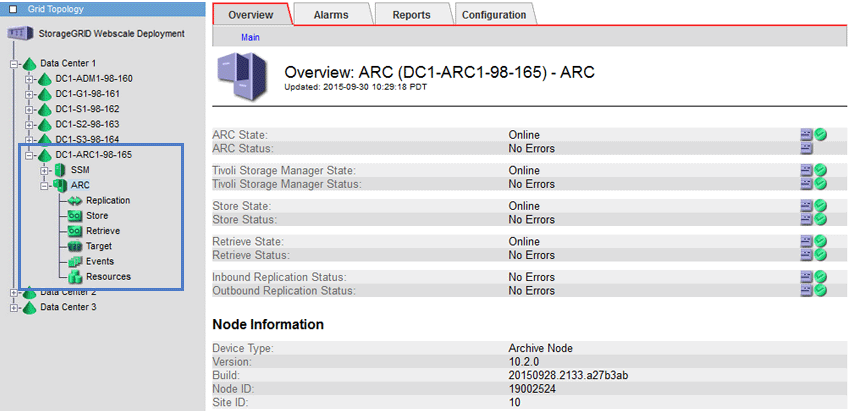What an Archive Node is
 Suggest changes
Suggest changes


Optionally, each StorageGRID data center site can be deployed with an Archive Node, which allows you to connect to a targeted external archival storage system, such as Tivoli Storage Manager (TSM).
The Archive Node provides an interface through which you can target an external archival storage system for the long term storage of object data. The Archive Node also monitors this connection and the transfer of object data between the StorageGRID system and the targeted external archival storage system.

After configuring connections to the external target, you can configure the Archive Node to optimize TSM performance, take an Archive Node offline when a TSM server is nearing capacity or unavailable, and configure replication and retrieve settings. You can also set Custom alarms for the Archive Node.
Object data that cannot be deleted, but is not regularly accessed, can at any time be moved off of a Storage Node's spinning disks and onto external archival storage such as the cloud or tape. This archiving of object data is accomplished through the configuration of a data center site's Archive Node and then the configuration of ILM rules where this Archive Node is selected as the "target" for content placement instructions. The Archive Node does not manage archived object data itself; this is achieved by the external archive device.

|
Object metadata is not archived, but remains on Storage Nodes. |
What the ARC service is
The Archive (ARC) service on Archive Nodes provides the management interface you can use to configure connections to external archival storage, such as tape through TSM middleware.
It is the ARC service that interacts with an external archival storage system, sending object data for near-line storage and performing retrievals when a client application requests an archived object. When a client application requests an archived object, a Storage Node requests the object data from the ARC service. The ARC service makes a request to the external archival storage system, which retrieves the requested object data and sends it to the ARC service. The ARC service verifies the object data and forwards it to the Storage Node, which in turn returns the object to the requesting client application.
Requests for object data archived to tape through TSM middleware are managed for efficiency of retrievals. Requests can be ordered so that objects stored in sequential order on tape are requested in that same sequential order. Requests are then queued for submission to the storage device. Depending upon the archival device, multiple requests for objects on different volumes can be processed simultaneously.


